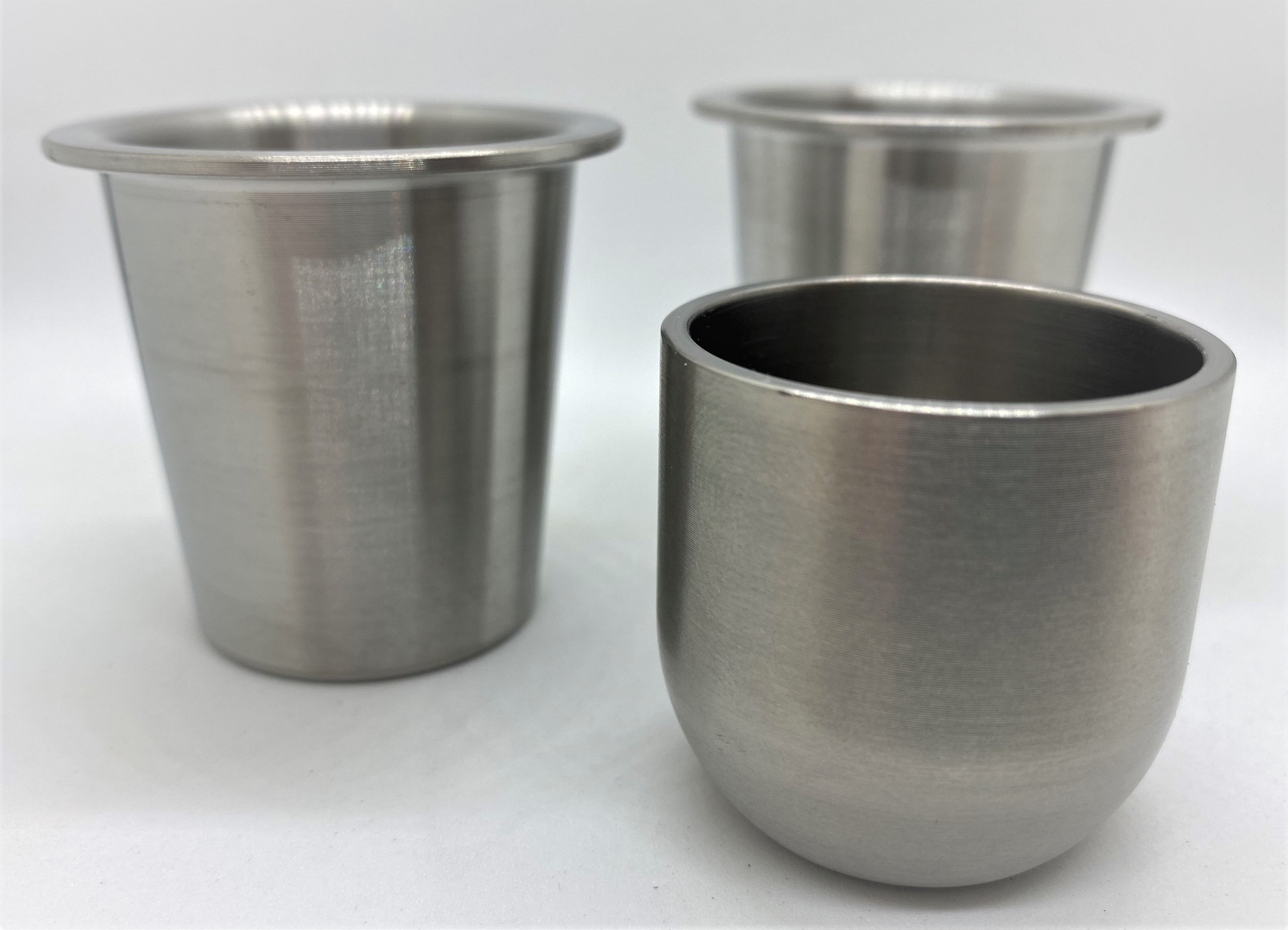What are Crucibles Made of?
Crucibles are engineered to withstand extremely high temperatures, so they need to be made of robust materials. Heat has historically been the defining factor underlying crucible material selection. Thus the earliest crucibles were made of fired clay, and were gradually replaced by earthen minerals with greater refractory properties.
Throughout the pre-industrial era and into the modern age, crucibles have increasingly been leveraged to melt and test more challenging materials. So, while high operating temperatures remained an acute requirement, additional demands were placed upon these utensils, including the need to withstand aggressive melt chemistries. A key part of the crucible selection criteria now is chemical compatibility, i.e. will molten materials react with the container walls and/lid?
Consequently, modern crucibles are made of a range of materials to suit the needs of today’s analytical chemists and engineers.
What are Crucibles Made of? A Quick Overview
- Alumina (Al2O3)
- Boron nitride (BN)
- Graphite (C)
- Magnesium oxide (MgO)
- Platinum (Pt)
- Quartz
- Zirconium (Zr)
What is the Best Material for a Crucible?
There is no single front-runner when it comes to material selection for crucible design. Heavy-duty carbon steel is often preferred for industrial service, performing well in applications like aluminium handling and rare metal powder production. However, steel crucibles would quickly fail under exacting analytical chemistry workflows and would likely contaminate analytes at levels that could invalidate results. For reference, crucibles used to prepare samples for X-ray fluorescence (XRF) spectroscopy must be inert as contaminants will be detected at to the sub parts per million (ppm) level.

The need for high-temperature materials that are inert and unreactive to most chemicals helps to narrow down the above list when selecting the right crucible for your analytical workflow.
Platinum Crucibles
Platinum is one of the oldest metals used to melt and test materials. It is inherently inert with an extremely high melting point, which can be elevated using alloying elements like rhodium (Rh). A pure platinum crucible will feature a melting point above 1770°C, while a platinum—rhodium alloy composed of 10%, or 3.5% rhodium boasts a melting point of 1780-1850°C. High-performance analytical crucibles comprise of pure platinum and its alloys are known for their extended length of service and high repeatability due to its comprehensive chemical resistance.
Zirconium Crucibles
Zirconium labware is not as well established as platinum in laboratory settings, but it has emerged as an extremely valuable supplement to conventional labware. With a melting point approaching 1855°C, and extensive corrosion resistance imparted by a stable zirconium oxide patina which forms at the metal-air interface of the crucible, zirconium labware remains inert in extreme conditions.
Which Crucible Material Should You Choose?
Platinum and zirconium have comparable thermochemical properties, but the latter is increasingly used as a cost-effective alternative due to its competitive price point. But heat, chemistry, and price are not the only parameters to consider. Chat with one of our experts if you would like to learn more about the differences between our platinum crucibles and zirconium labware.









